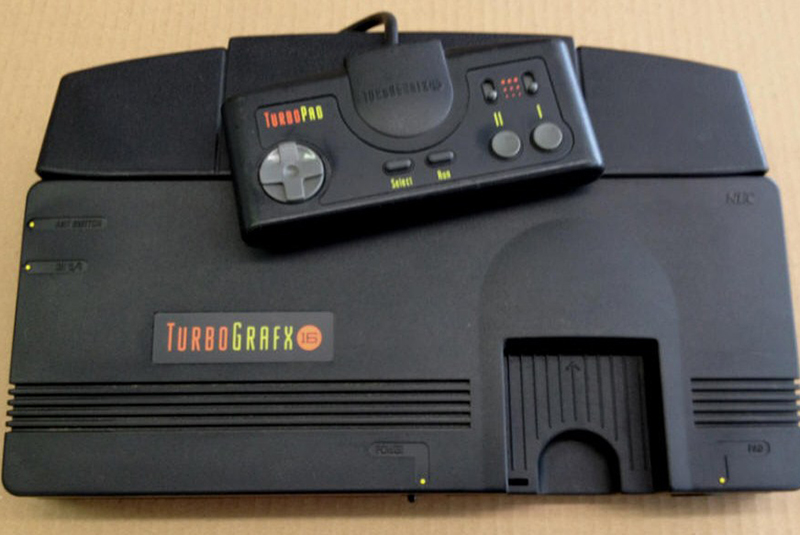
With this article, we’ve reached the end of the PC-Engine / Turbografx series, which I admit went on much longer than I anticipated. It also was a lot more interesting than I thought it would be. Let’s see what this final installment will bring, and if the series of famous shooters will continue here as well, or if there are yet some surprises left to discover.
Games I liked
Valis Series
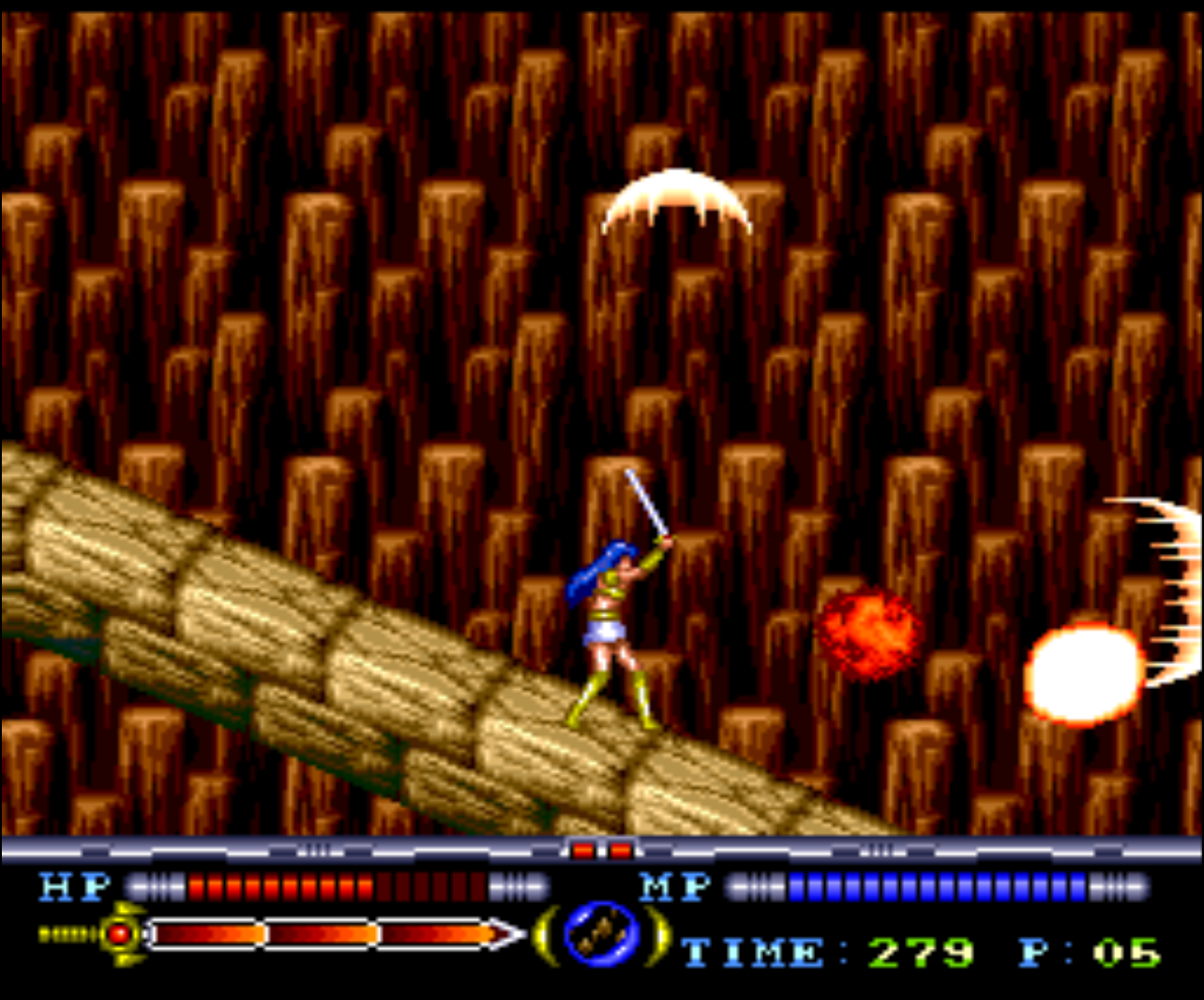
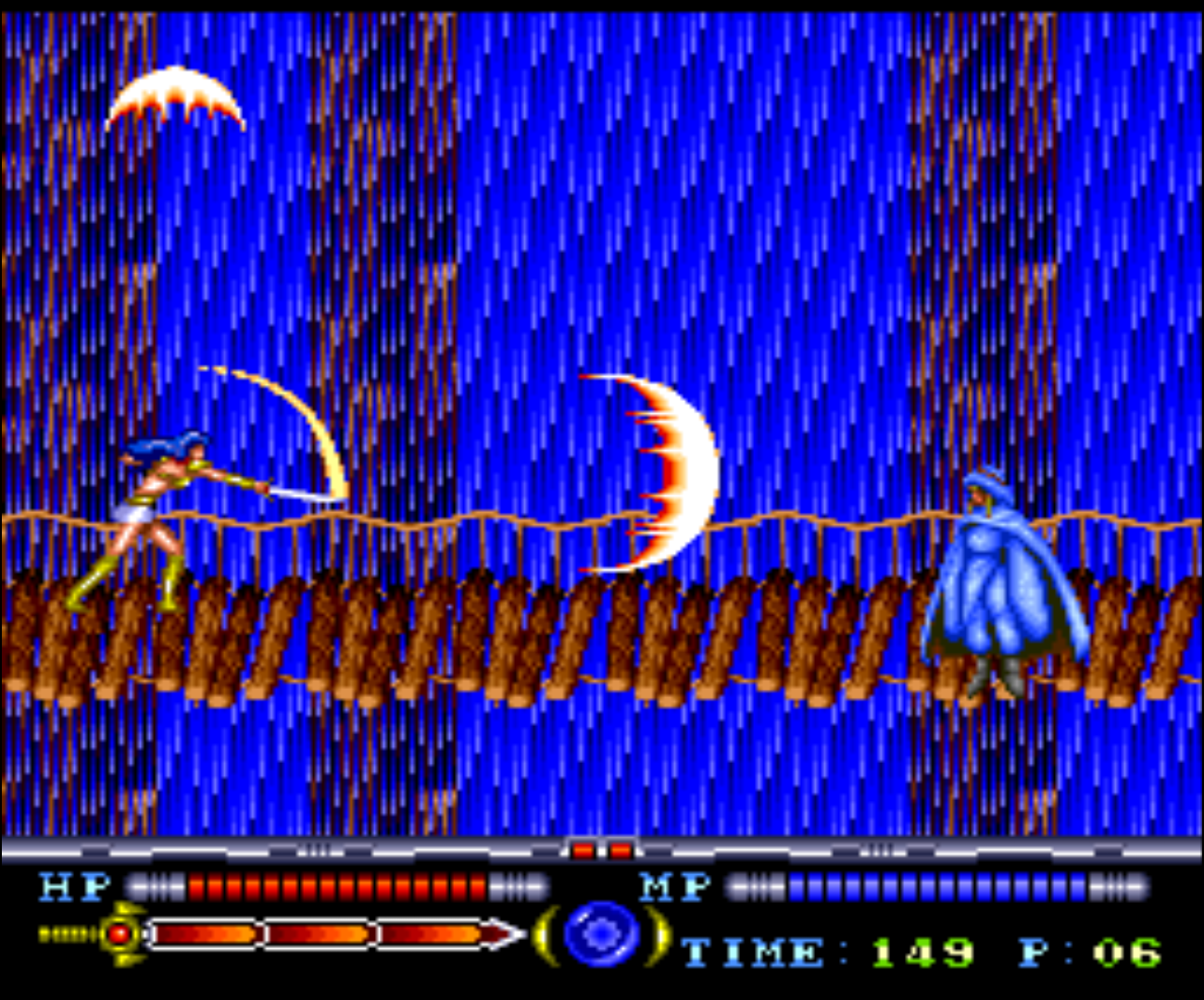
Valis is a series of action platformers where you play as a young school girl with a magical sword that can fight off daemons. The first part I already covered in part 4 of this series under the name “Mugen Senshi Valis - Legend of a Fantasm Soldier”. It’s a remake of the original Valis game which came out first for the MSX and NES. The PC Engine port was a remake with highly improved graphics and anime cut-scenes. Although it’s the first in the series, it’s the last that was released for the PC Engine in 1992. The first to be released on the PC Engine was Valis II in 1989.
Valis II is very similar in gameplay as Mugen Senshi Valis - Legend of a Fantasm Soldier, but with some small differences. You can not slide as you can in the original Valis, and the weapons you collect are shown as icons. You magic can be activated by simply pressing the “up” key which can lead to some accidental activation over time. There is no magic point (MP) meter for your magic that decides how often you can use your magic and that you can refill. Instead, you collect items that allow you a certain number of uses of that particular skill. Besides that, it’s still slice and dice as well as jump and run. The graphics are not that good, there is no parallax scrolling in the game, and videos have very limited animations. They also have an ugly green border which was removed in later installments of the series. The game was completely dubbed in English which sounds quite cliche, but helps you understand the overall story.
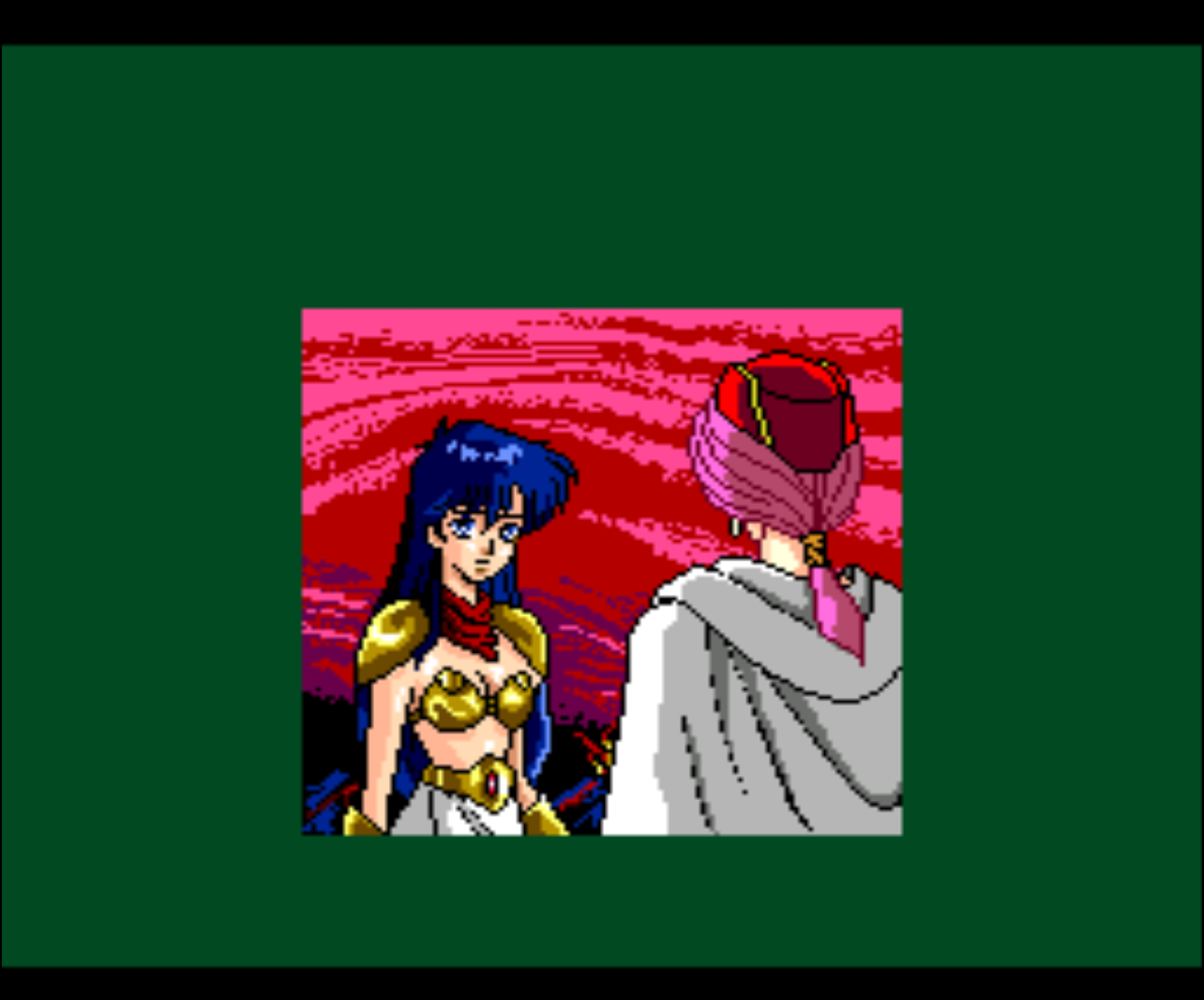
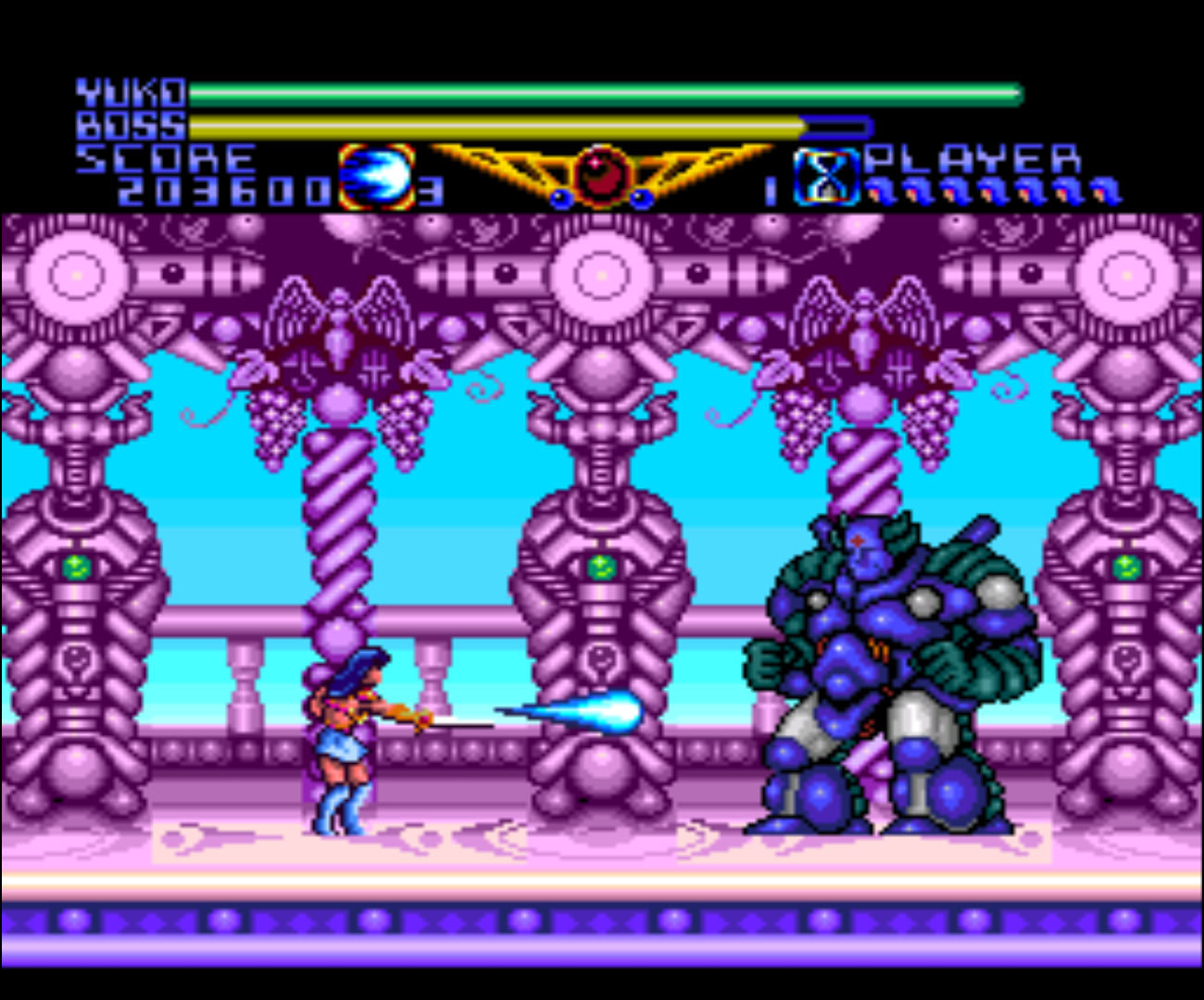
Valis III came out in 1990 for the PC Engine (and 1992 for Turbo Graphics). It improves over the Valis II in many ways. Gone is the ugly border around cut-scenes, and cut-scenes are actually rendered a lot bigger now with many more animations going on. The overall graphics improved as well.
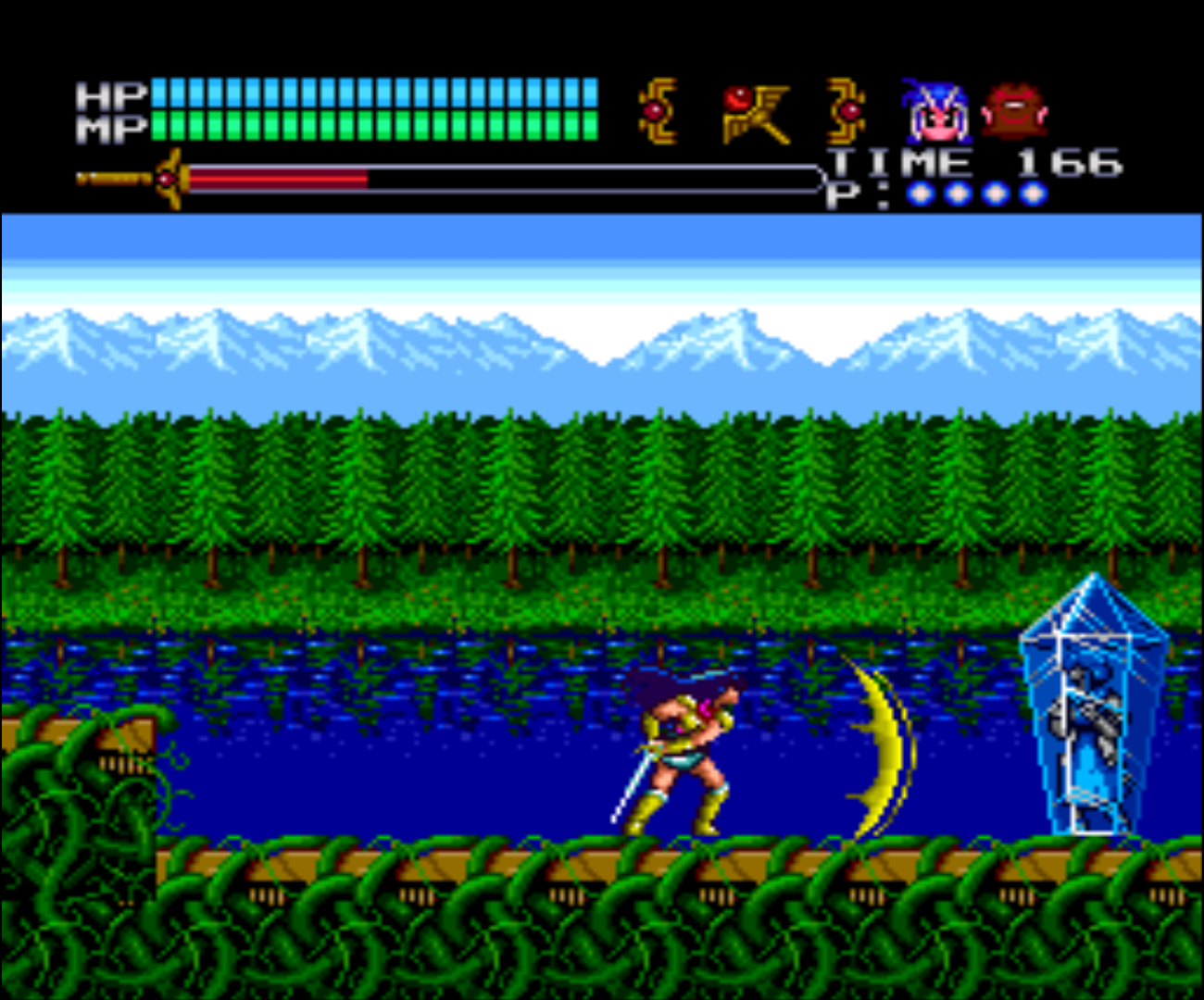

Back is the MP bar which can be filled by collecting items. You increase the strength of your attacks by increasing the length of your sword meter: the more the meter is filled before you do an attack, the more damage you do. You do no longer have different sword styles but instead can switch between different characters. Which have different attacks and attack-styles. You can switch between characters anytime within the game, except for boss fights where you have to keep the one with whom you entered the fight.
Back is also the sliding now on the “START” button while pressing down. Magic can be cast by hitting up AND the attack button rather than only up. Overall the game is a lot better than the second part in many ways. It llacks the parallax scrolling of the Mega Drive version of the game, but offers CD quality music instead.
Valis IV improves a little bit over Valis III im that you actually do have a little bit of parallax scrolling here and there. Released in 1991 (one year before the Valis I remake), it’s only available in Japanese. This time you play different characters though and you can switch between three different characters within the game (similar to Valis III). This time, though, this is needed to solve some puzzles, as only one of the characters can do a double jump in order to reach higher or further away places.
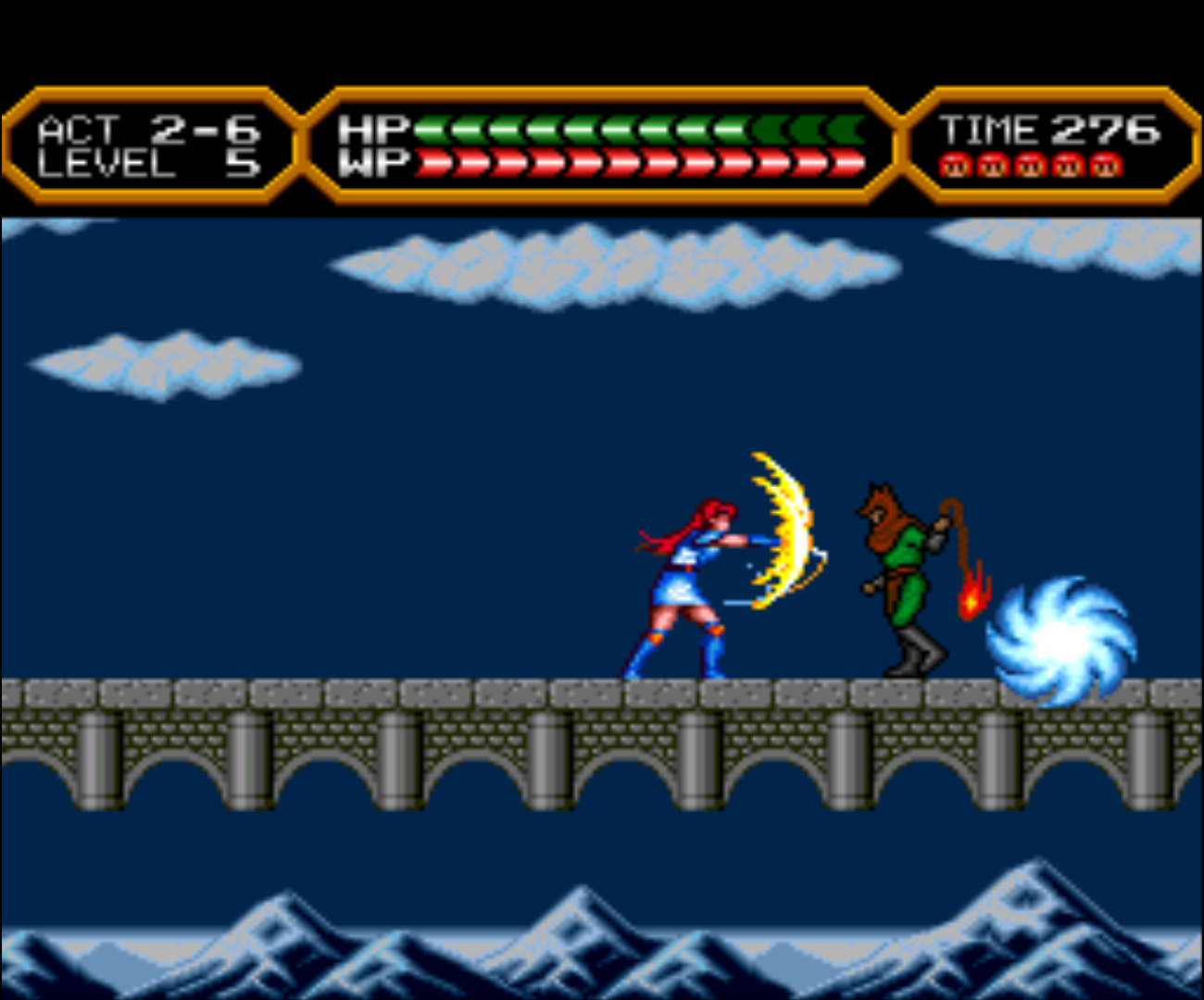

Magic is gone completely this time, and is replaced by a three-staged special attack for each character. Each Stage requires a certain amount of energy in your WP bar which is filled automatically as long as you don’t use it or get hit. Each stage has a different attack, and the third stage is a screen filling attack that does a lot of damage. Using it will decrease your overall WP meter to level 2, and you have to collect an item first to enlarge it to level 3 again. You don’t lose anything if you use Level 1 or 2 though.
All of the games in the series are fun to play, and I can highly recommend them if you like action platformers. With the second and third games being in English, it’s easy to follow the story for a while and enjoy the animated cut-scenes.
Wonderboy 3 - Monster Lair
This is a port of the classic arcade game to the PC Engine. There’s nothing much to say if you know the arcade game. You get a very good copy of it with improved CD sounds and that’s about it.
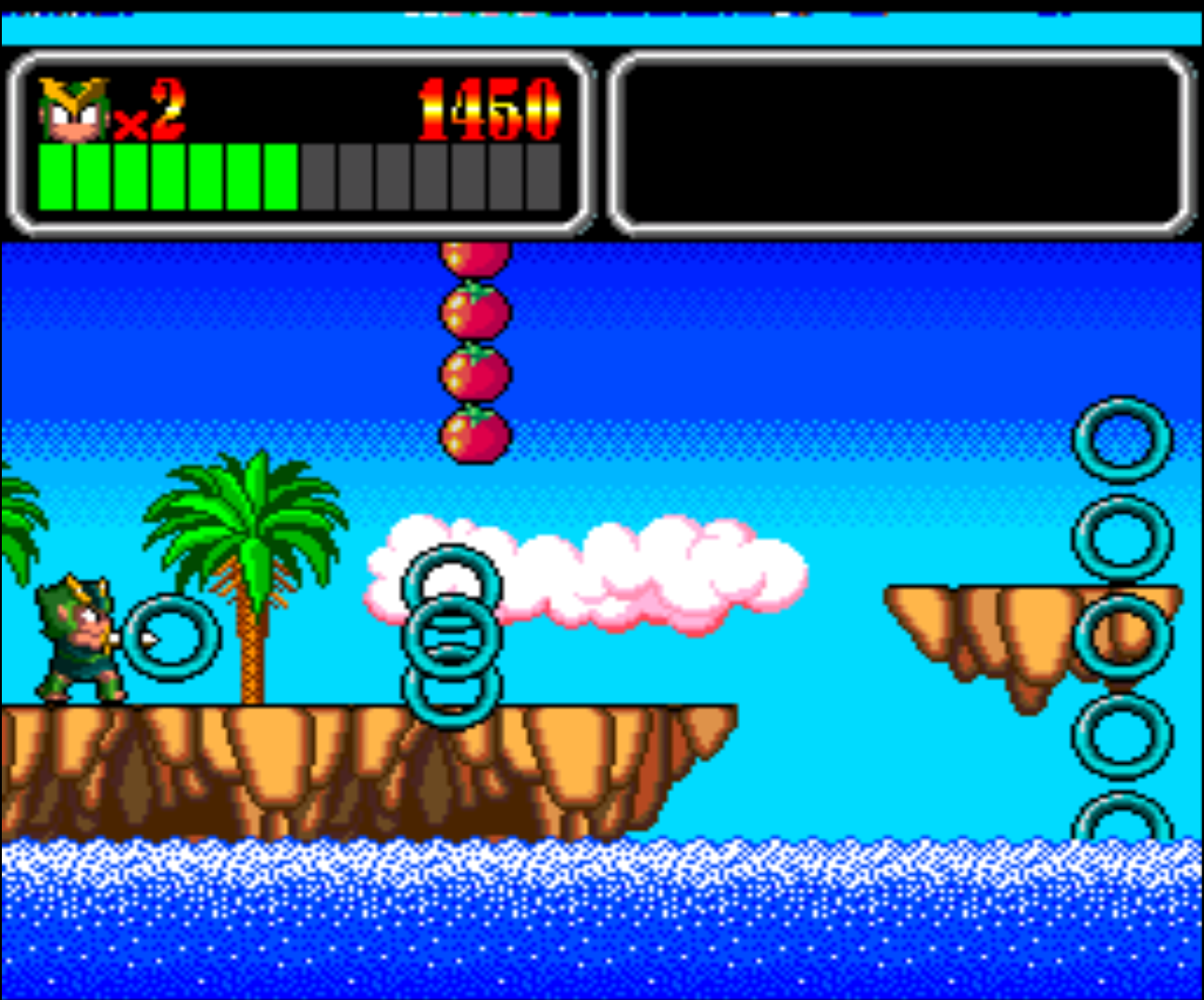 Figure 9 - Wonderful bright colors and comic like graphics
Figure 9 - Wonderful bright colors and comic like graphics
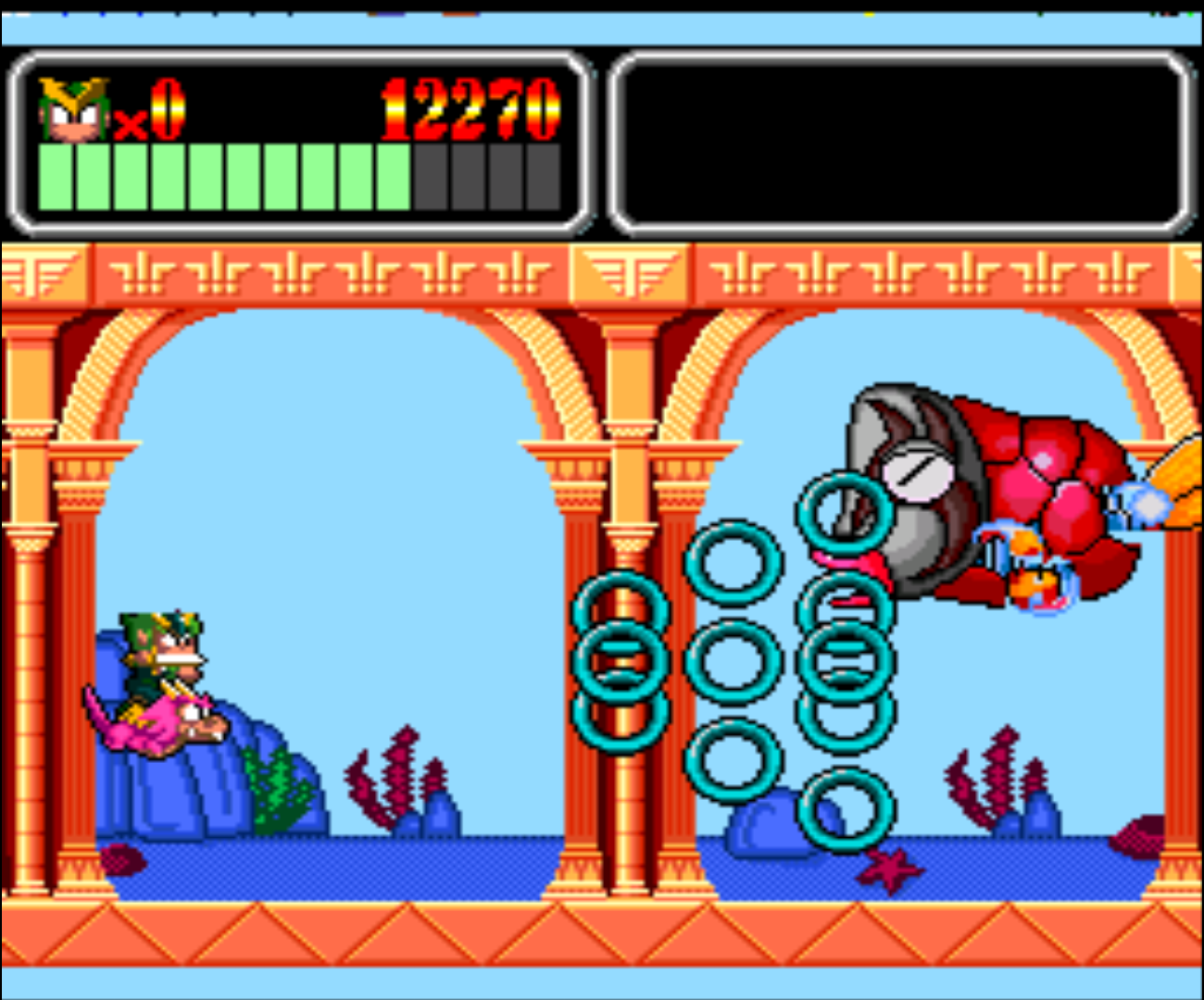
Figure 10 - Second stage of each level flying and boss fighting
If you don’t know this game, it is an arcade action platformer designed to eat your coins. The screen is constantly scrolling to the right, and you have to move forward to avoid being dragged along. The green life bar is also a time bar that reduces slowly over time, but can be replenished by collecting fruits and items. You can collect a couple of different weapons which, for a short time, will aid you in your quest. The game is fun, the music is good, and it’s a very nice port of the game.
Zero Wing
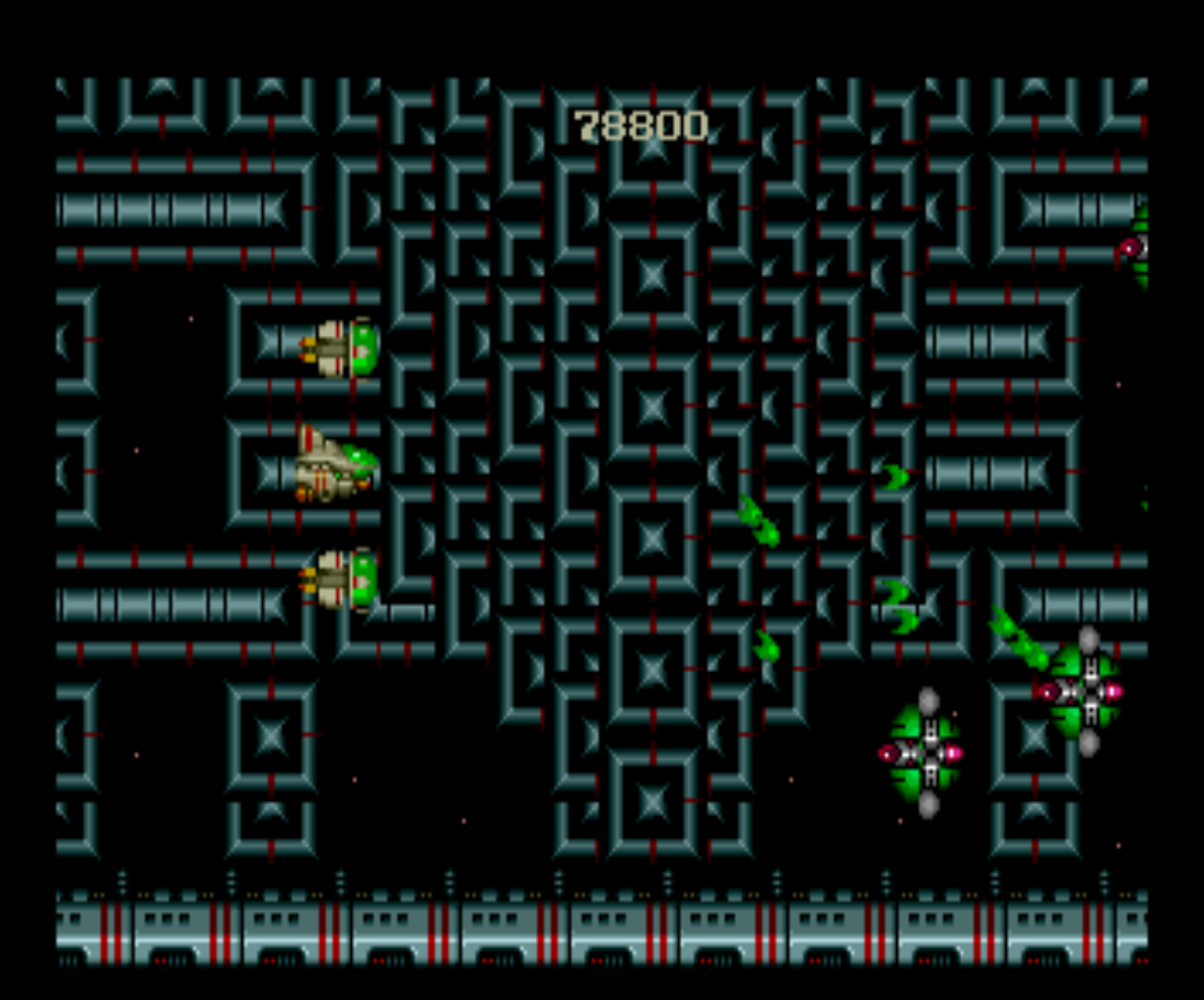
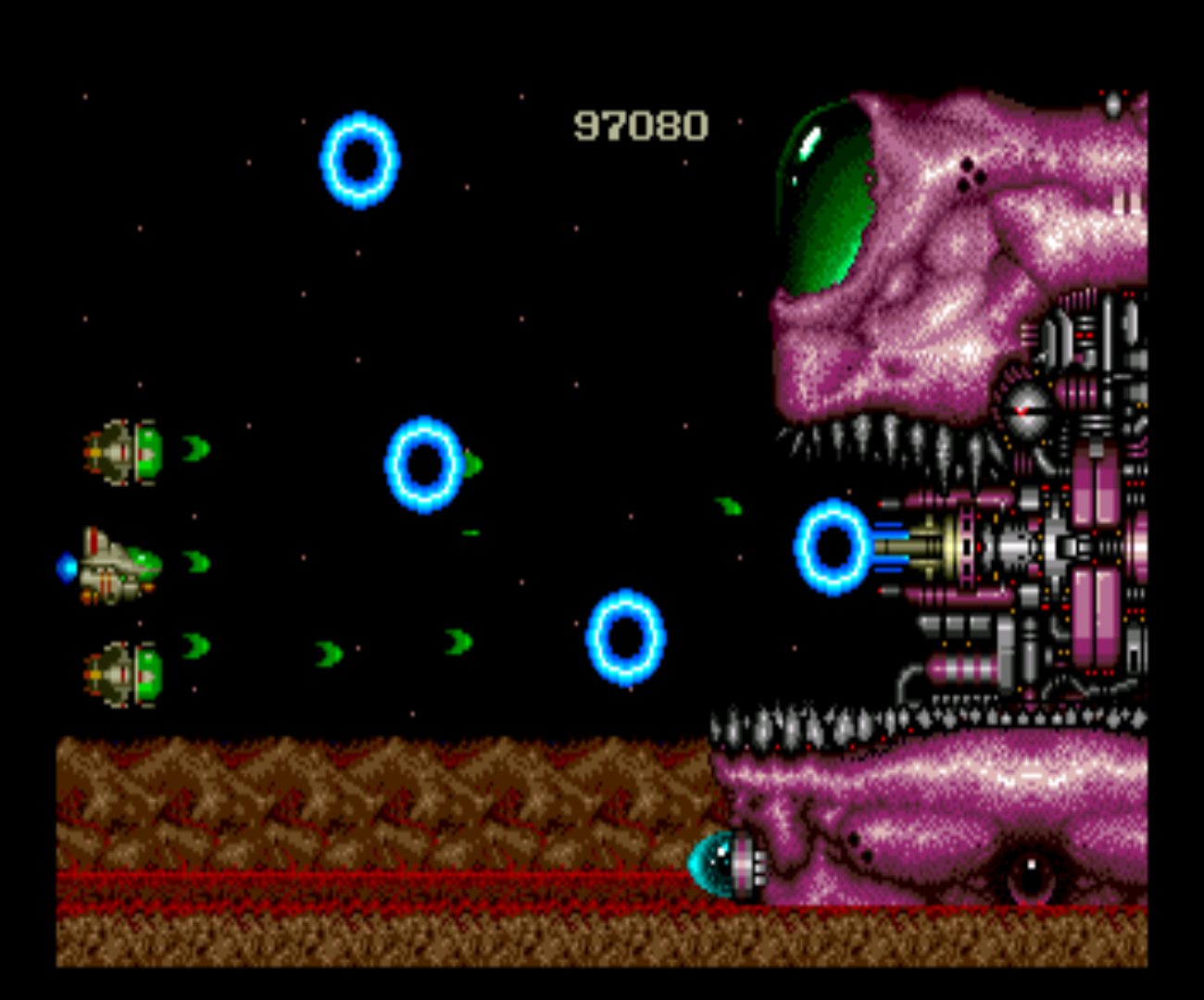
This shooter is not particularly impressive. It’s just the overall vibe with good graphics (but not impressive), nice gameplay, and fitting music. The game is good, not perfect, but it’s fun to play. The graphics lack good parallax scrolling, but you get a lot of big enemies and challenging situations without it being unfair. There are even some situations where you have to guide your space craft through very tight spaces, which worked perfectly fine, and I haven’t had trouble like in some other games. Bosses are huge, and it’s fun to find patterns to beat them.
You can collect three different weapon types represented by either the color red, blue, or green. The first is your standard pea shooter (vulcan cannon) in red, which fans out over time if you upgrade it and covers a lot of the screen. Blue is for a laser beam type of weapon, which goes straight forward and does a lot of damage. It is probably best for killing large enemies and bosses as it does the most damage over time. The last is green, which are self aiming shots that fly automatically to an enemy on the screen. Each of the weapons can be upgraded if you collect items of the same color. If you switch colors, you switch weapons, but do not increase or decrease the weapons power. There are also some other power ups that allow you to fly faster, for example, or will give you a bomb that you can throw at enemies, which does massive damage in a large radius over time.
You also have the ability to “capture” enemies and use them as a shield or throw them at other enemies., which is fun for a while, but I dropped that after a time. There are certainly better shooters out there for the PC Engine, but I really liked the simplicity of the style and gameplay.
Games I found ok
Tenchi wo Kurau (aka Dynasty Wars)
The fighting game with RPG elements is actually quite nice. You collect certain items to level up your character and get more HP, and you can collect a few weapons from enemies you killed to increase your overall strength a little. You can charge your attack to do extra damage and fight a bunch of bosses at the end of the level. Overall it is a rather good game. Graphically, it is not as good as the arcade version, but is very satisfying and not bad gameplay wise.
Tengai Makyo - Kabuki Itouryodan
This Street Fighter-style game offers 8 different characters to choose from. It’s actually quite good for the PC Engine and supports 6-button joysticks. However, it’s entirely in Japanese, and even the menus are hard to figure out. It also has a rather long loading time between levels compared to other games. Still, if you like Street Fighter like games you should definitely try this one as it’s one of the best of this genre for the PC Engine.
Tengai Makyou - Deden no Den
This is essentially Bomberman with a different graphics set, and there is nothing particularly good or bad about it.
The TV Show
I’m not sure if I like or dislike this game. You can choose between 8 different characters, each one with a silly background story, which shows them messing up, and then you go to something called “The TV Show”. This is a mixture of a puzzle and a fighting game. You can set different types of bombs, and some will kill or destroy objects nearby, while others will destroy entire floors underneath them. Your goal is to break certain objects (without dropping them in the endless pit underneath) to get what’s inside. The reward is mostly diamonds to increase your wealth which you need to “continue” when you die or mess up. It’s interesting, if only for a little while.
Uchuu Senkan Yamato (aka Space Battleship Yamato)
This game plays like an interactive animation film. You are the commander of the space battleship Yamato. For this, you can command different stations of your battleship and order them on tasks like shooting at enemies, sending fighter/bombers after them, determining where you want to concentrate your repairs, and setting the direction you want to fly and how quickly. Things like this, combined with decent graphics and sounds/music, make this game great, yet the game is completely in Japanese and I have a hard time understanding what I’m supposed to do. It’s easy enough to figure out the controls, but mission objectives are a different topic. It’s a shame, as I would love to play this game in a language I understand. It’s a very unique concept of a game and I very much enjoy playing it.
Vasteel
This game is a mixed bag. The animation is lengthy, with a fully English-voiced intro and fights, which is quite nice, with a good amount of detail. The gameplay itself is a little bit different though. It’s a tactical game similar to Advanced Wars for the Gameboy Advance, History Line 1914-1918, or Battle Isle. You command single units of an army, build new ones (as long as you have the funds), and send them toward enemy units and cities. Destroy the energy plant of a city, and you take it over, which in return gives you more funds. The goal is to eradicate the enemy main building and thereby win the map.
This sounds easy, but it can take many hours just to win a single map, with you constantly trying to capture and hold the same cities. A little different is the fact that you can control your units when it comes to a fight. Most of the time, your units have a fast but very ineffective gun and bigger gun that takes a long time to shoot, or is slow. You can try to avoid enemy shots and try to hit the enemy yourself. It’s not bad, but as I mentioned, a single level can take many, many hours and becomes very repetitive. It’s completely in English though, so if you like these kind of games, there should be nothing stopping you.
Vasteel 2
Although completely in Japanese, I found this game easier than its predecessor. It also uses the Arcade card, which means extra memory for animations, which you can see very well in the introduction. Overall this time, it feels more like you follow a storyline, unlike the previous game where you had a story and then just a map. This time you have mission objectives. You don’t need to destroy an enemy main building, but often have to destroy all enemies on screen. It’s fun, but still takes quite some time, although by far it is not as lengthy as the first game.
Where in the World is Carmen Sandiego
This puzzle game is nothing special. You travel around the world to collect clues about a crime suspect by following the hints of the people who have seen him. Create an arrest warrant when you have enough details about the person, then travel until you find the person. It’s fun for a little while to figure out the different clues, but the text scrolls rather slowly, and graphically it’s not even worth mentioning. Overall. it’s very average; not bad, but not good either.
World Heroes II
This Street Fighter 2 like game was very surprising for me. The graphics quality and animations are superb! You even see animations in the background of the stage like you have on “big consoles”. so I was really surprised to see that level of animation. Yet, the gameplay was extremely hard in my opinion (or I must be really bad). It was already extremely hard to beat the first enemy, although the game was set on “easy” mode. It’s a shame, since I enjoyed the game and graphics especially, but the game was way too hard for me to enjoy completely.
Xak III - The Eternal Recurrence
This RPG game was fully translated by some enthusiasts and can therefore be played in English, which is quite nice. The game itself is not bad, with an action RPG style similar to the Ys games (described below). You walk around and can slash at enemies and jump to overcome obstacles. Sometimes there are hidden switches behind coffins or a bookshelf, which can be moved. Boss fights can be long and rather hard. and while at any other time in the game standing around will heal you, in a boss fight this is disabled. The game and story is not bad, and the music is rather good, yet the graphics are very outdated. You can charge your attack and do either a magical ranged attack (a fireball) or build a stronger slash for extra damage. Sadly, controls are not all that good when trying to do this, and you often end up facing in a different direction than you intended to.
Ys Series
Although this is one of the few good and also few English RPG games for the system, I prefer playing it on other consoles such as the PSP, where the graphics are much better than on the PC Engine. Ys Book 1, 2, and 3 are available completely in English, with part 3 being the only one where you can jump and attack with a button. Part 4 goes back to the roots, and you start bumping into things again. It is in Japanese only, but there is a fan translation out there which at least translated all the texts, but not the audio. Overall, I think this series got better over time, and with it different ports to other systems, and as I said, I prefer playing it using a PSP emulator on ODROIDs.
Yu Yu Hakusho - Anshoubu!! Ankoku Bujutsukai
The graphics in this game are impressive both in the animated intro as well as in game, but it also feels just like an arcade shooter where you point your gun and shoot at an animated scene, and that’s basically what it is. You aim at the enemy’s head or other weak spots, such as when he’s running left and jumps right, and you try to repeatedly hit him before he hits you too often. The graphics are very impressive, and the animation is really good, but the gameplay quickly gets repetitive.
Games I disliked
Travel Epuru
This game might look cute at the start but, but it really isn’t all that cute. There are two little children that fight each other with bombs, grenades, sticks, and even magic. The goal is to knock out the other kid. The main focus is a boy and a girl fighting in silly penguin costumes. It’s neither a “cute” scenario nor is the gameplay anything interesting.
Conclusion
I was a little bit disappointed of the last part of the PC Engine / Turbografx series, since I guess that I was used to many impressive games while writing the other parts, and it took quite a while until the last part of the series brought forth some gems of its own.
It’s been a long time since I started this series, and I have to admit I did not expect it to take that long, nor that I would enjoy it that much. The PC Engine, especially the CD version, had some awesome games, and considering the hardware that was behind the Genesis / Sega CD and the SNES, it held up really well compared to these consoles, if you also keep in mind that the console was the first to utilize the CD format years before the Sega CD. It’s quite impressive what you could do with that console. I found plenty of games that I enjoyed immensely on the system, and with the recent port of PC Engine to the ODROID Go from @pelle7 I have even more awesome games that I can play on the go that I find far more impressive than, for example, some simple NES games.
In my opinion the PC Engine was really an underrated system. It was very advanced for its time, and I wished I could have played it “back in the day”. However, there are some downsides as well. The game was focused on the Japanese market and has a lack of good RPG games which I like, and other genres are also sparsely represented on this system. I might have not mentioned it previously, but I often played many many Japanese games as well, and I have to admit that it's a shame that I do not understand these games, as some of them are simply amazing and far beyond what other games had to offer for the platform.
A special example of this is the game "Private Eye Dol", which is an adventure game with lots of walking, searching, talking to people, interacting with objects, and so on. The game is simply amazing quality wise, since it utilized the extra memory of the Arcade Card for the system. There are many animations, many cut-scenes that are fully voiced, and overall the graphics and presentation is simply amazing and looks more like an SNES game than a PC Engine game. I just wished I could play this game in a language that I could understand.
nother example is "Seiya Monogatari - Anearth Fantasy Stories", which is an RPG game that looks more like it's from the SNES or a more powerful machine. The introduction is very detailed, and the overall game graphics look like they are from a more powerful console, paired with an incredible soundtrack. These are the games that I'm really missing out on due to the language barrier.
There are a lot more impressive games such as Snatcher, which fortunately also came out for the Sega CD two years after it was released for the PC Engine, but with some minor censorship compared to the PC Engine version. There are even more games that are really impressive for the console but are only available in Japanese. They show perfectly how far the hardware could have been pushed and what it was capable of doing. Overall, I was very impressed with the system, especially considering how old it is, and what things we now take for granted in more modern systems.

Be the first to comment